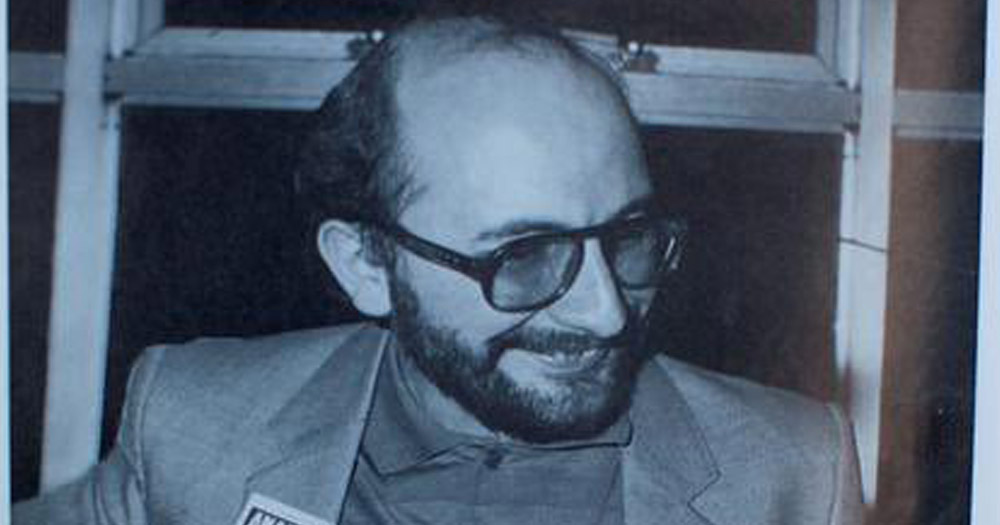*** Content warning: graphic description of a violent murder scene. ***
Today marks the 40 years since Charles Self was violently murdered at his home in Monkstown, Co. Dublin. His murder caused fear and intimidation among Dublin’s gay community and despite the case remaining open, no one has ever been charged.
Originally from Scotland, Self had moved to Dublin and was working as a set designer for RTÉ. His designs were extremely popular and he worked on some of the biggest shows such as Twink’s Christmas Special and The Late Late Show.
On the eve of January 20, 1982, Self had gone to meet friends to celebrate his recent promotion at work. He began the night at the Bailey on Duke Street and later moved on to Bartley Dunne’s, on the corner of South King’s Street and Mercer Street. Both bars were regularly frequented by gay men and Self was well known around the scene.
https://twitter.com/AdyHurley/status/1484299124614836225
In an article by Una Mullally, Bill Maher, a close friend of Charles Self, describes him as, “bubbly” and “good fun”. By all accounts, Self was believed to be in high spirits on the night of the murder and after leaving Bartley Dunne’s he went on to another well-known bar, Hotpot on Burgh Quay.
When Self left the bar he caught a taxi home from Burgh Quay. According to the taxi driver’s report, he was with a blonde-haired man. During the ride to Monkstown, he reported that the couple kissed for most of the journey.
Self lived in a small house on Annsley Mews, off Brighton Avenue. The laneway was quiet and secluded. He shared the house with his friend DJ and broadcaster, Vincent Hanley. Hanley was away that night, however, another friend and colleague from RTÉ, Berty Tyrer, was staying in Hanley’s room.
At approximately 9am on the morning of January 21, 1982, Tyrer came down to find Charles Self lying at the bottom of the stairs in a pool of his own blood. He had been stabbed 14 times. He had slash wounds to the throat and had part of a belt around his neck and on a chair. A number of wounds had penetrated all the way through the body, implying that they had been applied with extreme force.
https://twitter.com/AdyHurley/status/1484299137336197125
Although a neighbour later reported hearing screams and seeing a man climbing over the garden wall during the night, Tyrer, who was hard of hearing, had not been woken during the vicious attack. However, he did report being woken earlier in the night when a man entered his room and quickly apologised saying that he was in the wrong room.
There were several unusual aspects to the case. Firstly, the description of the man who had entered Tyrer’s room did not match that of the man in the taxi. The man that Tyrer described had short dark curly hair and spoke with a “West Brit” accent. Also, some of the furniture had been moved in an attempt to cover some of the pools of blood.
In addition to this, the body was blocking the front door suggesting that the killer had climbed out a small window in the kitchen. However, there had been no damage to a planter outside the window, instead, it had been moved to one side.
Gardaí initially focused their investigation on two male sex workers who were known to work in the Burgh Quay area. Neither of these men fitted the description that Tyrer had given and their fingerprints were not found at the scene of the crime.
https://twitter.com/AdyHurley/status/1484300341885734912
Following this, gardaí focused their interrogation on members of the gay community. The nature of the questioning and intimidating means of obtaining testimonies led to complaints being made to the Irish Council of Civil Liberties (ICCL).
In her report, Mullally quotes Kader Asmal of the ICCL as saying at the time, “Something rather odd is emerging. It appears to me that in certain cases there is a desire to draw up a profile on gays in Dublin.”
According to Mullally, Peter Murtagh wrote an article in The Irish Times on March 23rd, 1982 with the headline “Gays allege threats and taunts by gardaí”. In it, he reported an instance of detectives approaching a man for questioning in Phoenix Park.
Given the nature of the criminalisation of homosexuality during the 1980’s, many of the men interviewed were not out to their families. In his article Murtagh also reported the instance of another young man who claimed gardaí had come to his home four times. He was phoned several times resulting in him being pressured to come out to his family.
Despite the investigation and the questionable means by which testimonies were obtained, no arrests were made and the case remains open to this day.
© 2022 GCN (Gay Community News). All rights reserved.
Support GCN
GCN is a free, vital resource for Ireland’s LGBTQ+ community since 1988.
GCN is a trading name of National LGBT Federation CLG, a registered charity - Charity Number: 20034580.
GCN relies on the generous support of the community and allies to sustain the crucial work that we do. Producing GCN is costly, and, in an industry which has been hugely impacted by rising costs, we need your support to help sustain and grow this vital resource.
Supporting GCN for as little as €1.99 per month will help us continue our work as Ireland’s free, independent LGBTQ+ media.
